

| Newsletter English May/July |

|

|





ICRANet Newsletter
ICRANet Newsletter
May - July 2015
SUMMARY
- XIV Marcel Grossmann Meeting - Letter from the Pope - Gold medal from Italian President Mattarella - Albert Einstein, Michele Besso and Marcel Grossmann - 14th Italian-Korean Symposium on Relativistic Astrophysics - Signature of the MOU between ICRANet and LeCoSpa - ICRANet visitors - ICRANet seminars and lecture series for PhD students - Recent publications - Conference proceedings: the 2nd ICRANet César Lattes Meeting and the International Conference on Gravitation and Cosmology /the fourth Galileo-Xu Guangqi meeting
XIV Marcel Grossmann Meeting
The Fourteenth Marcel Grossmann Meeting on Recent Developments in Theoretical and Experimental General Relativity, Gravitation, and Relativistic Field Theory was held at the University of Rome Sapienza July 12 - 18, 2015 http://www.icra.it/mg/mg14/

There were about 1200 participants registered to the MG14 meeting. About 1000 people submitted their abstracts for presentation in about 100 parallel sessions. There are five satellite meetings of MG14 held in Brazil, China, Cuba, Monaco and France, and Mexico, for details see http://www.icra.it/mg/mg14/satellite_meetings.htm 
During MG14 four public lectures were delivered, for details see http://www.icra.it/mg/mg14/public_lectures.htm The International Organizing Committee chaired by Remo Ruffini can be found here http://www.icra.it/mg/mg14/ioc.htm The International Coordinating Committee including representatives from 55 nations and chaired by Robert Jantzen can be found here http://www.icra.it/mg/mg14/icc.htm The Local Organizing Committee chaired by Massimo Bianchi can be found here http://www.icra.it/mg/mg14/loc.htm 
The MG Awards are announced in http://www.icra.it/mg/awards/#14th.htm Please see also the previous MG Awards here http://www.icra.it/mg/awards/
Letter from the Pope
On the 13 of July His Holiness Pope Francis sent his greetings to the participants of MG14 meeting in Rome. The letter can be found here: http://www.icra.it/mg/mg14/his_holiness_pope_francis.pdf
Gold medal from the Italian President Mattarella

The medal received by the Director of ICRANet and President of ICRA professor Remo Ruffini from the President of the Italian Republic Sergio Mattarella in occasion of the meeting held at the Besso Foundation.
MG XIV Awards 2015
EUROPEAN SPACE AGENCY (ESA) presented to its Director General, Johann-Dietrich Woerner
"for the tremendous success of its scientific space missions in astronomy, astrophysics, cosmology and fundamental physics which have revolutionized our knowledge of the Universe and hugely benefited science and mankind" 

The Science Program of the European Space Agency (ESA, born originally as the European Space Research Organization ESRO) has been in existence for 50 years. During that time it has worked incessantly to provide the European scientific community with the very best tools in all fields of space science -- a path of sustained excellence in discovery and innovation. Its founding fathers included figures of the caliber of Edoardo Amaldi, Pierre Auger and the cosmologist Hermann Bondi. As early as 1959, Auger pushed for a European institution in space research, the ESRO of which he became the first Director General, followed in 1967 by Bondi, who called on scientists to define the scientific guidelines for future space missions, including an historical meeting in September 1969 in Interlaken. So began the amazing European advance in space science. Fifty years ago Europe was struggling for a presence in a field dominated by the USA and USSR space programs. Today ESA science missions have achieved undisputed primacy in a number of fields. The landing on the Comet 67-P of the Philae probe released from the Rosetta spacecraft in late 2014 (see above right image of the actual landing of the comet), followed by the public worldwide, is perhaps the Agency’s most visible achievement, a clear example of fascinating, inspirational science with a strong link to innovation. And Rosetta is only one of Europe’s many strong successes in space science. Another mission, Planck, has provided the most precise map ever of the cosmic microwave background, the best available “baby picture” of the Universe. Or consider Herschel, observing in the far infrared; it has opened a new view of the formation of the different structures of the Universe, from stars and planets to galaxies and clusters of galaxies, showing how the shape of the Universe has evolved through time. Similar successes has been the X-ray observatory XMM-Newton, working in synergy with the ASI Beppo SAX mission, the NASA Chandra and SWIFT missions as well as with the other pillar of European Science the VLT ESO optical Observatory in Chile. These missions have been deciphering the violent behavior of the Universe, probing the physical behavior of matter under extreme conditions of gravity and temperature. This collaboration from the ground and from space has led to witnessing the onset of supernovae, to following live the gravitational collapse leading to a black hole formation, and to probing the nucleosynthesis process from the earliest stars till their final evolution, with the production of all the elements which make our life possible in the Universe. And there is more to come. The LISA Laser Interferometer Space Antenna aimed at the heroic detection of gravitational waves is a truly major fundamental physics experiment. Space has already shown what can be done in fundamental physics, with the successful launch of the NASA Gravity Probe B Mission in 2004, and the rigorous process of analysis that led to the definitive observation of the frame dragging effect of general relativity, as will be presented in this MGXIV. ESA’s Science Program, by achieving space missions leading to world-leading scientific results, has been inspiring a generation of young Europeans towards science and engineering careers, thus fostering innovation, and over the longer term, growth in Europe, made all the more effective by the collaboration with national programs and resources. By pushing the boundaries of technological capabilities ESA has contributed immensely to the sustaining and enlarging of European technological and scientific skills and infrastructures, and to promoting innovation in both industry and academia. ESA has consistently aimed at inspiring people with missions that show the world-leading results Europeans can achieve by working together, joining creatively with many worldwide scientific and technological institutions. This was the vision of its founding fathers, a vision that continues to be realized 50 years on. KEN'ICHI NOMOTO "for heralding the role of binary systems in the evolution of massive stars" 

That Japan gave independent profound innovative contributions to physics it is well known by the work of Hideki Yukawa. That fundamental contribution has been achieved by collaborations with leading western scientists it has been clearly manifested by the work of Tomonaga in close contacts with Werner Heisenberg. In the field of modern cosmology the stage was set by the dialogue between Gamow, Hayashi and Enrico Fermi. This great tradition in astrophysics, through the intervening work of Sugimoto on computational astrophysics, originates the scientific figure of Ken'ichi Nomoto. Crucial among his many contributions on modeling the final evolution of stars it has been to isolate the crucial role of the initial mass of stars above or below 8 solar masses. The role of the "electron capture supernovae" leads as a final outcome either to a white dwarf or to a Neutron Star, making Nomoto work essential for the understanding of the many different kinds of Supernovae, both Supernovae of type Ia and Core-Collapse through the modeling of SN 1987A. Possibly the most original contribution, which makes Ken Nomoto outstanding in the astrophysical community has been his contribution in linking the final evolution of stars, traditionally addressed in a single system, to the binary nature of the supernova and hypernova progenitors. This link far from being just an academic exercise made possible by the advanced computational facilities achieved by the Japanese school, it has been shown to be central to the understanding of physics of a sequence of astrophysical events such as binary X-Ray sources, pioneered by the Uhuru satellite, of Supernovae, pioneered by the Kamiokande detection of SN 1987A neutrinos, and most recently of Gamma-ray Bursts, made possible by the renaissance started by Beppo Sax, and continued by Swift and Fermi satellites. In the understanding of the variety of these astrophysical systems which unveil today a continuous evolutionary astrophysical scenario, the works of Ken Nomoto represents a fundamental long lasting contribution. MARTIN REES "for fostering research in black holes, gravitational waves and cosmology" 

Born on June 23, 1942 in York, England, Martin Rees has received the most distinguished honors of Great Britain: Astronomer Royal since 1995, life member for life of the House of the Lords since 2005 with the title Martin John Rees, Baron Rees of Ludlow, Order of Merit recipient in 2007, Fellow of the Royal Society since 1979, Master of Trinity College, Cambridge (2004 to 2012) and President of the Royal Society (2005 to 2010). His many prizes and awards include the Gold Medal of the Royal Astronomical Society, the Isaac Newton Prize, the Heineman Prize, the Bruno Rossi Prize, the Gruber Prize and the Crafoord Prize. We are particularly happy to present him with the MGXIV Marcel Grossmann Award in 2015, the year of the centenary of the Einstein equations as well the Golden Jubilee of Relativistic Astrophysics. Martin belongs to a small group of astrophysicists born around 1942 who have greatly influenced the birth and the development of relativistic astrophysics, including Vladimir Belinski, Brandon Carter, Steven Hawking, Remo Ruffini and Rashid Sunyaev. As early as 1966 Martin published one of the classic papers of relativistic astrophysics, pointing out that "an object moving relativistically in suitable directions may appear to a distant observer to have a transverse velocity much greater than the velocity of light". This explanation of apparent "superluminal" astronomical motion (see above figure) still remains even today an outstanding example of science exposition for its sober completeness. In the subsequent years, Martin launched a new direction of cosmological research in Cambridge, a development which is reflected in his contribution to the book “Black Holes, Gravitational Waves and Cosmology" authored by Rees, Ruffini and Wheeler, a book whose conception was initiated during a meeting in Interlaken organized by Hermann Bondi, then Director General of ESRO. In its first twelve chapters Ruffini and Wheeler reviewed the physics of black holes and gravitational waves introducing such concepts as the ergosphere, the black hole orbit of maximum binding and the astrophysical sources of gravitational waves, pointing out the limits of revealing them with ground-based experiments. In the following six chapters Martin summarized the key developments of modern cosmology: Ryle's discovery of extragalactic radio sources at high cosmological redshift, Martin Schmidt's discovery of quasars, and Penzias and Wilson's discovery of cosmological background radiation. He describes all these topics with the passion and clarity he employed in overcoming the then fashionable steady state theory to bring students and collaborators back into the mainstream of relativistic astrophysics. This same passion and effectiveness has characterized his career ever since in many other scientific accomplishments and we are very grateful to him for sharing his ideas, his teaching and his research and extending their reach through his doctoral student Roger Blandford, Craig Hogan, and Priyamvada Natarajan as well as through his dedicated direction of the Institute of Astronomy in Cambridge for many years. YAKOV SINAI "for applying the mathematics of chaotic systems to physics and cosmology" 

Andrey Nicolaevich Kolmogorov (see above portrait) and Lev Davidovich Landau have deeply influenced the development in Russia of mathematics and physics, respectively, bringing them to unprecedented levels admired by all the world. The Kolmogorov School has fostered the frontiers of mathematical knowledge in depth and breadth with such great minds as Israil Gelfand, Vladimir Arnold and Yakov Sinai. Yakov Grigorievich Sinai (see above picture) has been a Professor at Moscow State University and a Senior Researcher at the Mathematical Department of the Landau Institute of Theoretical Physics, Russian Academy of Sciences since 1971 and since 1993 he has also been simultaneously a Professor of Mathematics at Princeton University. Yakov Sinai is one of the most influential mathematicians of our time, having achieved numerous groundbreaking results in the theory of dynamical systems, in mathematical physics and in probability theory. Many mathematical ideas bear his name, including the Kolmogorov-Sinai entropy, Sinai's billiards, Sinai's random walk, Sinai-Ruelle-Bowen measures, and Pirogov-Sinai theory. He is recognized as one of the deepest contributors to the mathematical theory of stochastic dynamical systems. Sinai received the prestigious Abel Prize in mathematics in 2014 and many of his mathematical results have been applied to physics. Particularly noteworthy for the general relativity community are his fundamental results on the stochastic nature of early cosmology obtained in his pioneering 1983 paper in collaboration with E.M. Lifshitz, I.M. Khalatnikov, K.M. Khanin, and L.N. Shchur. Landau had designated the problem of the initial cosmological singularity as one of the three fundamental problems of theoretical physics and the members of his school V. Belinski, I. Khalatnikov and E. Lifshitz then found the general cosmological solution near a big bang or big crunch singularity in a series of papers from 1969 into the 1970s. This “BKL solution” gives rise to a chaotic dynamical system characterized by a positive Kolmogorov-Sinai entropy. The chaotic behavior of the higher-dimensional analogs of the BKL solution has also been deciphered by T. Damour, M. Henneaux and H. Nicolai. The results of the Kolmogorov-Sinai school have thus illuminated the stochastic nature of the BKL cosmological solution. In this very special year 2015, which marks the Year of Light, the centenary of Einstein Equations and the Golden Jubilee of Relativistic Astrophysics, this Award is a tribute to Yakov Sinai for his own achievements as well as a celebration of the fruitful interaction between the Kolmogorov school in mathematics and the Landau school in physics, in the precise spirit of the Marcel Grossmann Meetings. SACHIKO TSURUTA "for pioneering the physics of hot neutron stars and their cooling" 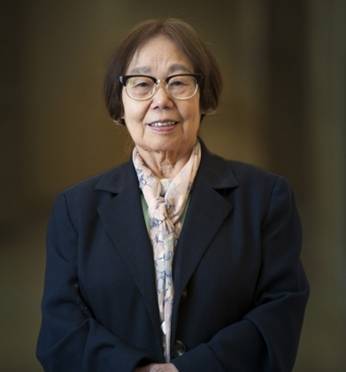
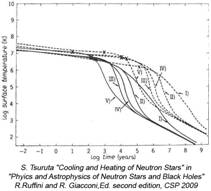
Beginning her undergraduate studies in Japan, Sachiko Tsuruta received foreign student fellowships and obtained her Bachelor degree in physics from the University of Washington in Seattle and then earned her Ph.D. from Columbia University. It was under the guidance of Al Cameron at NASA that she initiated her pioneering work on the nature of neutron stars giving particular attention to the issue of their cooling processes. After her Ph.D. Sachiko started an intense itinerary of major scientific institutions scattered around the Northern Hemisphere. After a five year research position at the Harvard-Smithsonian CfA, she accepted research positions at NASA, Greenbelt and then the University of Sussex. She then took a position at the Max Planck Institute for Astrophysics in Munich, during which she received a dual position as a faculty member at Montana State University in the beautiful town of Bozeman, commuting back and forth in the following years. As far back as her early days in Seattle, Sachiko had met Hideki Yukawa and Chushiro Hayashi from Kyoto University as well as Satio Hayakawa from Nagoya University and Kazuhiko Nishijima from the University of Tokyo. In the following years her presence in Japan grew through a variety of visiting positions, during which she became an active member of that restricted group of astrophysicists active in the main institutions in Japan, including Yosihide Kozai, Daichiro Sugimoto, Ken'ichi Nomoto, Yasuo Tanaka, and Minoru Oda in Tokyo (Oda received the MG VI Award), with Humitaka Sato and Katsuhiko Sato at Kyoto, with Satio Hayakawa (Hayakawa received a MG V award) and Hideyo Kunieda's group in Nagoya, with Jun Jugaku who had restructured the PASJ at Tokyo Observatory, with the nuclear physic group of Ryozo Tamagaki in Kyoto. Through their interactions and direction came to life the great development of Japanese astrophysical research in both theoretical and observational fields from the ground and from Space, that the world admires today. Yearly Sachiko has migrated from Montana to Japan, to the leading scientific institutions in Europe and around our northern Hemisphere.Sachiko has truly been a pioneer in the study of neutron stars, including their composition, structure and thermal properties. She has extensively analyzed not only their equations of state and their cooling and heating properties but also the inner composition of their core, exploring the existence of hyperons, pions, kaons, quarks and their possible condensation in the cores and the associated URCA and other neutrino processes. Her work has also been extensively applied to the study of active galactic nuclei and supermassive black holes, both from theoretical point of view and in looking directly for its verification in observational data. She has been a splendid example of scientists working from the very beginning of relativistic astrophysics and following continuously and successfully through the latest developments. She has established a perfect example, especially for women: In her own words, “Since Japan still does not have many woman scientists, perhaps I can be a model for young Japanese women.
The 14th Marcel Grossmann Meeting – MG XIV
4th May 2015, Beijing (China) Zhongguancun Campus, UCAS The awards are delivered on May 4, 2015 at the MG14 satellite meeting the International Conference on Gravitation and Cosmology: the Fourth Galileo-Xu Guangqi Meeting in Beijing: Goes to FRANK C.N. YANG "for deepening Einstein's geometrical approach to physics in the best tradition of Paul Dirac and Hermann Weyl" Delivered at 9:50 am Goes to T.D. LEE (award received by Yu-Qing Lou on behalf of Prof. T.D. Lee) "for his work on white dwarfs motivating Enrico Fermi's return to astrophysics and guiding the basic understanding of neutron star matter and fields" Delivered at 7:00 pm FRANK C.N. YANG "for deepening Einstein's geometrical approach to physics in the best tradition of Paul Dirac and Hermann Weyl" 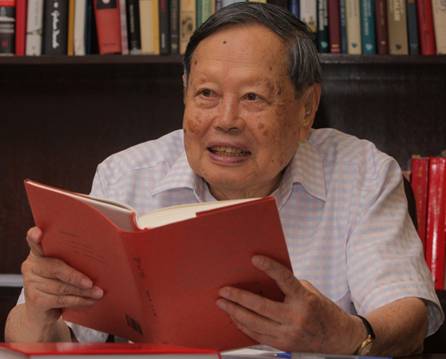
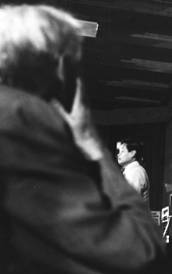
"… I would like to discuss some influence Fermi had in China: this is the case in which two of Fermi's Chinese students and collaborators had an unprecedented impact on science at the international level and triggered the scientific development of the largest nation in the world: China. During my second visit to China in 1979 I went to Kun Ming: it was quite an experience to see this beautiful location on the border of a lake so vividly described by Marco Polo. There was a train line constructed by the French reaching this town from Hanoi. There was also a beautiful university where two young students studied physics during World War II, there the professors from the Bei DA and Qing Hua university of Beijing and their families having escaped from the east of China ahead of the Japanese invasion. Their names were Chen Ning Yang and Tsung Dao Lee. At the end of the war they transferred to the USA: Frank C.N. Yang became Fermi's assistant and T.D. Lee was followed in his Ph.D. thesis by Fermi. The remarkable scientific career of these two young Chinese scientists is well recorded in the history of science. After Nixon's visit to China in 1972, Yang and Lee frequently went back to China to deliver lectures based on the Fermi tradition and today they are spending the greater part of their time in China organizing scientific centers and activities. In 1979 Yang gave a lecture at the second MG meeting in Trieste (see figure on the right: C.N. Yang speaking with a thoughtful Pam Dirac listening). During the Third Galileo-Xu Guangqi Meeting in 2011 I had another pleasant meeting with C.N. Yang. This also gave me the opportunity to see Beijing University again, having originally seen it in 1978 after the cultural revolution with all its libraries burned, now renewed and reaching a new splendor. Next to the Zhou Pei-Yuan Institute are the offices of the C.N. Yang Center. We talked about our common friend Isidor Rabi and his role in collaborating with Eisenhower as President of Columbia University prior to the latter's election as President of the USA. We also talked about Fermi's role in formulating his theory of beta decay, of the adventures of the A-bomb and H-bomb projects and many other topics. This also gave me the chance to introduce him to our ongoing projects with ICRANet in Brazil. From "Einstein, Fermi, Heisenberg and Relativistic Astrophysics: Personal Reflections by Remo Ruffini" World Scientific Singapore 2015 T.D. LEE "for his work on white dwarfs motivating Enrico Fermi's return to astrophysics and guiding the basic understanding of neutron star matter and fields" 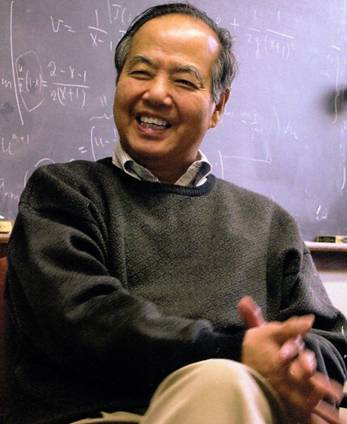
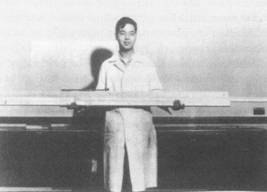
... Returning to the main topic of Fermi and astrophysics, it is interesting that according to T.D. Lee Fermi's original critical attitude expressed in his Trento lecture on the interior of stars was evolving towards the end of his life. As recalled by T.D. Lee in a talk held at a joint meeting of the APS and AAPT in February, 2010 "Remembering Enrico Fermi," Fermi was beginning to warm up towards astrophysics in his final years: Fermi asked Lee during his Ph.D. thesis the approximate temperature of the Sun at its center. Lee replied, "Ten million degrees." Fermi asked: "How do you know?" Lee told him he had looked it up. Fermi asked if he'd verified the number and Lee replied, "It's really complicated. It's not so easy to integrate these equations." Fermi suggested that Lee build a huge specialized slide rule that would enable the solution of two radiative transfer equations, one that involved the 18th power of the temperature, and the other that involved the reciprocal of temperature to the 6.5th power. Over the next few weeks Lee built a slide rule that was 6.7 feet long and carried out the necessary integration. 'It was great fun'... In the imperial Chinese tradition of the past, in each town in China there was a palace in which every year the best young astronomers were examined and selected and brought to the imperial palace to perform their study and research. Great credit goes to T.D. Lee for having reactivated this selection process on a large scale and having sent the most qualified young students not to the imperial palace in Beijing but to the leading universities in the USA for many years a similar program has been activated in Tokyo. These experiences, as well as our more limited effort with ICRA and ICRANet, have been significant components in guaranteeing that most impressive scientific, technological and industrial development that the entire world admires today in China. In some sense this authentic scientific and cultural evolution of modern China was triggered directly and indirectly by the influence of Fermi." From "Einstein, Fermi, Heisenberg and Relativistic Astrophysics: Personal Reflections by Remo Ruffini" World Scientific Singapore 2015
Albert Einstein, Michele Besso and Marcel Grossmann
13-17 July 2015
A celebration of The International Year of Light by UNESCO
The 100th Anniversary of the Einstein Equations The Golden Jubilee of Relativistic Astrophysics a Parallel Meeting of MGXIV under the aegis of Besso Foundation ICRANet Hebrew University of Jerusalem - Albert Einstein Archives and Racah Institute for physics Max-Planck-Institut für Wissenschaftsgeschichte
The program of the meeting is:
Monday 13 Session "History of Science", Chaired by Jürgen Renn Exhibition and projection of: “Einstein Anno Zero” (from RAI - TG2 Dossier) Wednesday 15 - 5:00-7:00 pm Exhibition Ceremony by invitation only (137 invited) Chairperson: - Maria Lia Orsa Lumbroso Speakers: - Remo Ruffini, Director ICRANet - Jürgen Renn, Director Max-Planck-Institut für Wissenschaftsgeschichte - Hanoch Gutfreund, Former President of The Hebrew University of Jerusalem - Claudia Graf, granddaughter of Marcel Grossmann, and Tilman Sauer Presentation of the biography of Marcel Grossmann by Claudia Graf and Tilman Sauer Presentation of the two volumes by Princeton University co-authored by Hanoch Gutfreund and Jürgen Renn Presentation of the book ICRANet and relativistic astrophysics Thursday 16 Session "History of Science", Chaired by Hanoch Gutfreund Exhibition and projection of: "Il Caso Neutrino" (from RAI teche) From Monday 13 to Friday 17 the exhibition will be open from 2:30 to 10:00 pm to all participants of MGXIV and accompanying persons. Please, show your badge at the entrance. Free access. For details of the meeting please see http://www.icra.it/mg/mg14/social_events.htm The website of Besso Foundation is http://www.fondazionemarcobesso.it/
14th Italian-Korean Symposium on Relativistic Astrophysics, July 20-24, 2015, ICRANet, Pescara, Italy
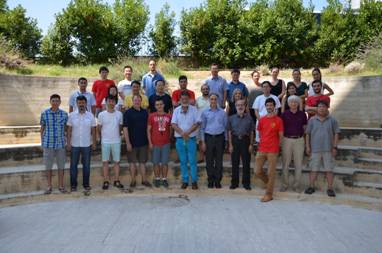
The scientific program http://www.icranet.org/images/stories/Meetings/IK14/program.pdf. The meeting covers such topics as General Relativity, Black Hole physics, Neutron Stars, Gamma-Ray Bursts, strong fields in astrophysics and cosmology. The webpage of the meeting: http://www.icranet.org/index.php?option=com_content&task=view&id=935
Signature of the MOU between ICRANet and LeCoSpa
On July 15 2015 the Memorandum of Understanding between ICRANet and LeCoSpa was signed by the director of ICRANet prof Remo Ruffini and director of LeCoSpa prof Pisin Chen in Besso Foundation in Rome, Italy. The photos from the ceremony can be found here: http://www.icranet.org/index.php?option=com_content&task=view&id=957
ICRANet visitors
In July 2015 several prominent scientists visit ICRANet headquarters in Pescara. Among them professors Felix Aharonian (Germany), Grant Mathews, Francis Everitt and Robert Jantzen (USA), who continue collaboration with ICRANet, as well as new visitors: profs. Reza Monsouri (Iran), Mansour Haghighat (Iran), Aleksander Isayev (Ukrane), Bruno Da Cunha (Brazil), Aurora Perez Martinez (Cuba), Hyung Won Lee (South Korea).
In addition, several young researchers visit ICRANet: Ana Penacchioni, Samuel Santos, Geanderson Carvalho, Ronaldo Vieira Lobato, Edson Otoniel, Lilian Ferrao and Flavia Rocha (Brazil), Abishev Medeu and Kuantay Boshkayev (Kazakhstan), Li Liang (Sweden). All these scientists took part in the IK14 meeting and presented their latest results.
ICRANet seminars and lectures for PhD students
We are continuing our series of ICRANet seminars and lectures for PhD students held as usual each Wednesday mainly in Rome and broadcasted via internet with the GoToMeeting software.
The series of lectures regarding the data reduction and analysis of high-energy sources in the X and gamma energy range, held by Luca Izzo, see: http://lucagrb.altervista.org/lectures.html is continued with ICRANet seminars organized by Jorge Rueda.
Recent publications
Proceedings of the plenary session of the Zeldovich-100 meeting are published in Volume 59, issues 6 and 7 of Astronomy Reports, please see:
http://link.springer.com/journal/11444/59/6/page/1, http://link.springer.com/journal/11444/59/7/page/1.
These contributions include: Issue 6 A.G. Aksenov, R. Ruffini, G. V. Vereshchagin, Radiative transfer in relativistic plasma outflows and comptonization of photons near the photosphere V. A. Belinski, The generic solution with isotropic Big Bang G. S. Bisnovatyi-Kogan, Outer parts of large galactic clusters in the presence of dark energy Kuantay Boshkayev, Jorge Rueda, Marco Muccino, Extracting multipole moments of neutron stars from quasi-periodic oscillations in low mass X-ray binaries Sandip Chakrabarti, Turning points in black holes astrophysics V. M. Chechetkin, M. V. Popov, The role of large-scale convection in supernovae explosions Pisin Chen, R. Ruffini, Did gamma ray burst induce Cambrian explosion? A.D. Chernin, Dark energy in flows of galaxies Marek Demiański, Ester Piedipalumbo, The cosmological constant—a brief history and recent results M. Demiański, A. G. Doroshkevich, Cosmology beyond the standard model: Multi-component dark matter model M. Khlopov, Cosmoparticle physics: The universe as a laboratory of elementary particles Issue 7 S. G. Moiseenko, G. S. Bisnovatyi-Kogan, Development of the magneto-differential-rotational instability in magnetorotational supernova Marco Muccino, Remo Ruffini, Carlo Luciano Bianco, Maxime Enderli, Milos Kovacevic, Luca Izzo, Ana Virginia Penacchioni, Giovanni Battista Pisani, Jorge A. Rueda, Yu Wang, On binary driven hypernovae and their nested late X-ray emission Remo Ruffini, Black holes, supernovae and gamma ray bursts R. Ruffini, L. Izzo, C. L. Bianco, J. A. Rueda, C. Barbarino, H. Dereli, M. Enderli, M. Muccino, A. V. Penacchioni, G. B. Pisani, Y. Wang, Induced gravitational collapse in the BATSE era: The case of GRB 970828 M. V. Sazhin, O. S. Sazhina, Search for cosmic strings N. I. Shakura, K. A. Postnov, A. Yu. Kochetkova, L. Hjalmarsdotter, L. Sidoli, A. Paizis, Wind accretion: Theory and observations I. Siutsou, C. R. Argüelles, R. Ruffini, Dark matter massive fermions and Einasto profiles in galactic haloes Y. Wang, R. Ruffini, M. Kovacevic, C. L. Bianco, M. Enderli, M. Muccino, A. V. Penacchioni, G. B. Pisani, J. A. Rueda, Predicting supernova associated to gamma-ray burst 130427° Regular journal papers F. Cipolletta, C. Cherubini, S. Filippi, J. A. Rueda, R. Ruffini, Fast Rotating Neutron Stars with Realistic Nuclear Matter Equation of State, accepted for publication in Phys. Rev. D, available online at: http://arxiv.org/abs/1506.05926. C. L. Fryer, F. G. Oliveira, J. A. Rueda, R. Ruffini, On the Neutron Star-Black Hole Binaries Produced by Binary-driven Hypernovae, submitted to Physical Review Letters, available online at: http://arxiv.org/abs/1505.02809. L. Becerra, F. Cipolletta, C. L. Fryer, J. A. Rueda, R. Ruffini, Angular Momentum Role in the Hypercritical Accretion of Binary-Driven Hypernovae, submitted to The Astrophysical Journal, available online at: http://arxiv.org/abs/1505.07580 H. Ludwig, R.Ruffini, S.-S.Xue, Collective electronic pulsation around giant nuclei in the Thomas–Fermi model, Nuclear Physics A 941 (2015) 1–15. S.-S.Xue, Experimental searches of four-fermion operators in the torsion-free Einstein–Cartan theory, Physics Letters B 744 (2015) 88–94. V. Belinski, On the Supergravitational Solitons, accepted to Phys. Rev. D, available at http://arxiv.org/abs/1505.01310.
The proceedings of the Second César Lattes Meeting
We are very happy to confirm that the proceedings of the 2nd César Lattes Meeting will be published by AIP Conference Proceedings http://scitation.aip.org/content/aip/proceeding/aipcp. The contributions can have up to a maximum of 10 pages and will be reviewed by referees of the IOC or appointed specifically. The detailed recommendations for the preparation of the contributions can be found in the website: http://www.icranet.org/2cl/proceedings.htm.
The deadline for submission of contributions is July 1, 2015. The editorial board for the proceedings is composed by Prof. Ulisses Barres de Almeida (CBPF-Rio de Janeiro, Brazil), Prof. Pascal Chardonnet (Université de Savoie, France), Prof. Rodrigo Negreiros (UFF-Niterói, Brazil), Prof. Remo Ruffini (ICRANet, Italy), and Prof. César Vasconcellos (UFRGS-Porto Alegre, Brazil).
The proceedings of the International Conference on Gravitation and Cosmology/the fourth Galileo-Xu Guangqi meeting held in Beijing China (May 4-8, 2015)
This meeting, see webpages http://www.icranet.org/4GX or http://www.kitpc.ac.cn/?p=ProgDetail&id=CP20150504&i=main was very successful. Many worldwide well-known physicists, here we mention some of them A. Ashtekar , D. Blair B. Barish, J. Ellis, P. Horava, A. Starobinsky, M. Shaposhnikov, R. Ruffini, M. Sasaki, et al. had delivered their important lectures, covering the topics of relativistic astrophysics, astro-particle physics, gravitational wave, solution to Einstein equation and black hole physics, quantum gravity, and cosmology, both experimental and observational aspects and theoretical aspects. Their contributions to the conference have now been collecting and will be published as the conference proceedings in the refereed journal of "International Journal of Modern Physics A (IJMPA)".
The deadline for submission of contributions is July 31, 2015. The editorial board for the proceedings is composed by Profs. Rong-Geng Cai and Yue-Liang Wu (ITP, CAS, China), and Prof. Remo Ruffini (ICRANet, Italy).
|
|
||